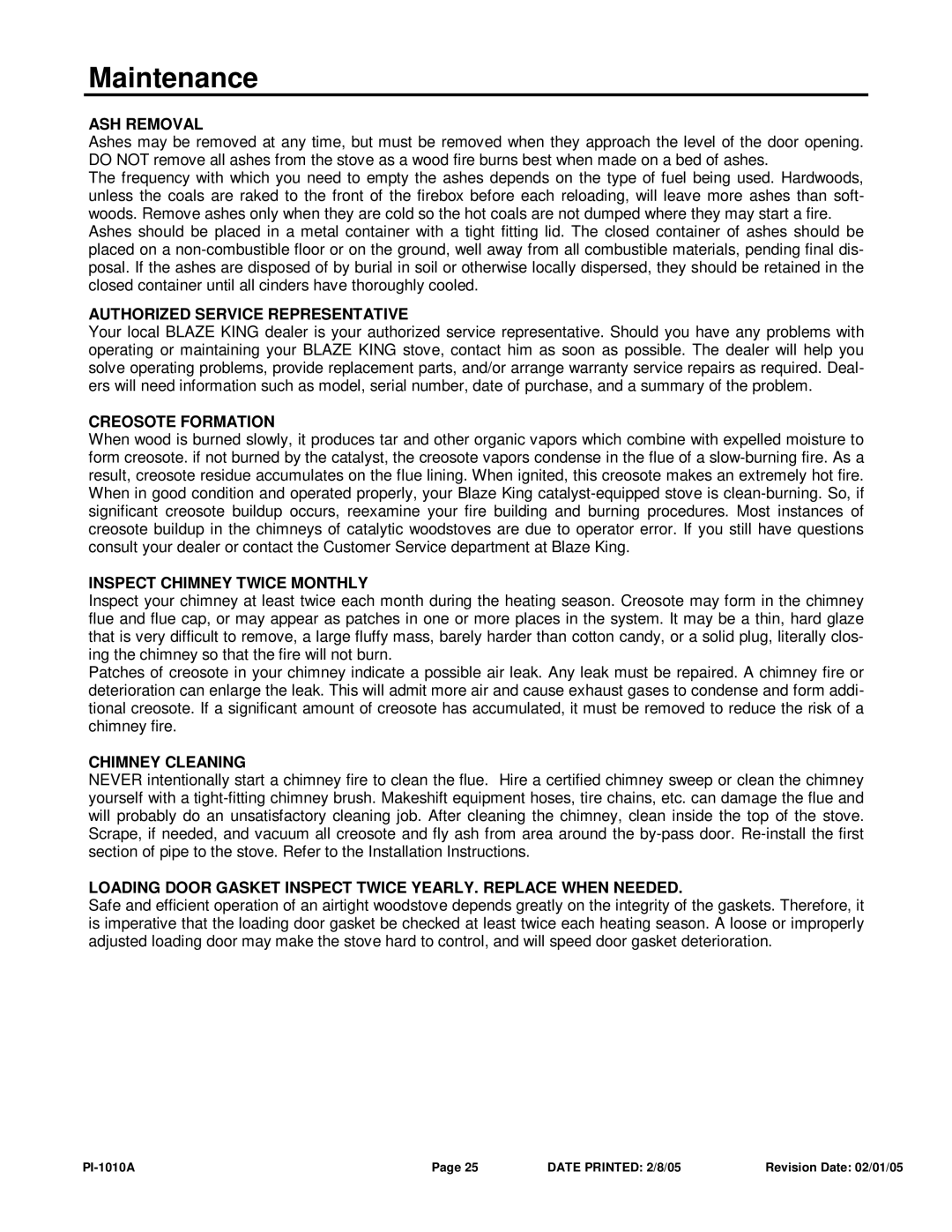Maintenance
ASH REMOVAL
Ashes may be removed at any time, but must be removed when they approach the level of the door opening. DO NOT remove all ashes from the stove as a wood fire burns best when made on a bed of ashes.
The frequency with which you need to empty the ashes depends on the type of fuel being used. Hardwoods, unless the coals are raked to the front of the firebox before each reloading, will leave more ashes than soft- woods. Remove ashes only when they are cold so the hot coals are not dumped where they may start a fire.
Ashes should be placed in a metal container with a tight fitting lid. The closed container of ashes should be placed on a
AUTHORIZED SERVICE REPRESENTATIVE
Your local BLAZE KING dealer is your authorized service representative. Should you have any problems with operating or maintaining your BLAZE KING stove, contact him as soon as possible. The dealer will help you solve operating problems, provide replacement parts, and/or arrange warranty service repairs as required. Deal- ers will need information such as model, serial number, date of purchase, and a summary of the problem.
CREOSOTE FORMATION
When wood is burned slowly, it produces tar and other organic vapors which combine with expelled moisture to form creosote. if not burned by the catalyst, the creosote vapors condense in the flue of a
INSPECT CHIMNEY TWICE MONTHLY
Inspect your chimney at least twice each month during the heating season. Creosote may form in the chimney flue and flue cap, or may appear as patches in one or more places in the system. It may be a thin, hard glaze that is very difficult to remove, a large fluffy mass, barely harder than cotton candy, or a solid plug, literally clos- ing the chimney so that the fire will not burn.
Patches of creosote in your chimney indicate a possible air leak. Any leak must be repaired. A chimney fire or deterioration can enlarge the leak. This will admit more air and cause exhaust gases to condense and form addi- tional creosote. If a significant amount of creosote has accumulated, it must be removed to reduce the risk of a chimney fire.
CHIMNEY CLEANING
NEVER intentionally start a chimney fire to clean the flue. Hire a certified chimney sweep or clean the chimney yourself with a
LOADING DOOR GASKET INSPECT TWICE YEARLY. REPLACE WHEN NEEDED.
Safe and efficient operation of an airtight woodstove depends greatly on the integrity of the gaskets. Therefore, it is imperative that the loading door gasket be checked at least twice each heating season. A loose or improperly adjusted loading door may make the stove hard to control, and will speed door gasket deterioration.
Page 25 | DATE PRINTED: 2/8/05 | Revision Date: 02/01/05 |
